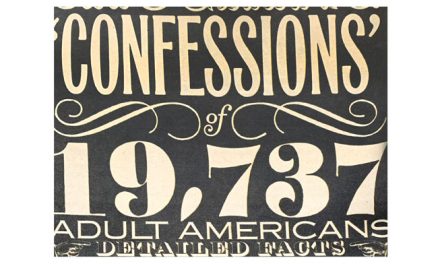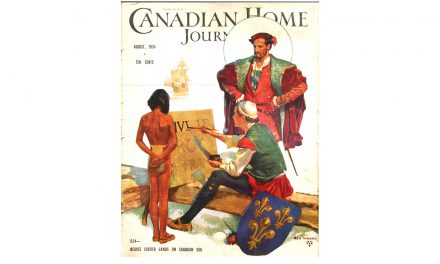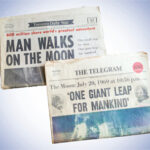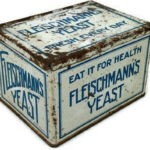Every advertiser begins with the same blank space: The New Yorker magazine showed how two pages in Printer’s Ink could really be filled creatively
White space distinguishes this New Yorker magazine advertisement that appeared in Printer’s Ink, the trade paper devoted to the print world
Great advertisements communicate by creatively using the components of advertising design.
White space is a key component in every advertisement. Used properly it is not waste space.
There’s a lot of white space in this full-page ad. The headline and the illustration are the only other components. See how they work together to get the message across..
In this page the readers’ eye may be attracted first by the illustration but there is a pull to jump to the big, bold headline. Or, if you start with the headline, there’s a natural tendency to drop to the right corner. Either way, readers learn quickly that The New Yorker has circulation across the United States.
There’s nothing further to be said in this message; additional copy would be redundant.


Note also the balance in the design: the headline is centered and the illustration is just the right size and in the right spot. Three layout components — the headline, the illustration and white space, work smoothly in this advertisement.
Unlike the wide-open advertisement above, this advertisement uses almost all of the available space — big, big headline, a big illustration that dominates the page, squeezing the body copy to the very edge of the page.
Here the illustration may first catch the eye but the bold headline quickly pulls the eye upwards. It reads easily, almost without any eye movement.
The headline quickly leads the reader to study the claim that The New Yorker is a two-face magazine. So there’s a moment to review the illustration before seeking an explanation in this beautifully creative copy.
Typical of The New Yorker advertisements, this copy makes the point succinctly and with humour. Check it in the blue type below the advertisement.
The body copy at
the bottom reads:

Before it gets read, it usually gets thumbed.
Right-handed readers thumb from front to back.
Left-handed readers thumb from back to front.
Or is it the other way around!
Your ad could be first or last, depending on the reader.
What’s more, to a right handed thumber, a left-hand page get’s higher notice.
And to a left-hand thumber, a right-hand page gets higher notice.
Or is that the other way around, too?
So you can see why a request for a “right hand page far forward” means so little in The New Yorker.

No offence intended but this advertisement for The New Yorker extolling the virtues of any page, left or right, appears on page 9, a right hand page. Did they ask for it or was it positioned randomly?










